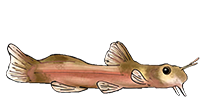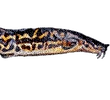If it's new, thank you Jools. I use that tool all the time and find it very helpful (fraught with errors sometimes, but definitely a valuable resource when used in context).
For people unfamiliar with what you can do with it, I'll take you through my favorite steps:
Start with any species. ... Let's say .
- From the CLOG page, click on the GBIF link (near bottom of CLOG page).
- On the first GBIF page, click on the Occurrences link.
- This will bring you to a page that lists the reported specimens of your species which are logged at the website. You MAY see a "filter" column on the left that asks to confirm that you're interested in a particular species. If you are, then say YES. This will narrow your list. After clicking YES, then click the link to MAP. (If you don't initially see the filter list, just click MAP now)
- Once at the MAP, you'll see dots corresponding to reported collection sites for your fish. If you didn't see the filter list before, look for it now and confirm that you want your actual species. If you're on a mobile device, this filter may be hidden in a "hamburger" icon. Click on the hamburger to confirm your selection and narrow your search.
- To focus in on specific collection points, use the tools on the right (either square or polygon) to select individual or groups of points. If you mess up, toss your selection in the trash can and start over.
- Finsh the polygon to complete your selection. After making your selection, click the TABLE link.
- Once on the Table page, you will see a list of all incidences where people have reported collecting a species from the area you selected. Click on any of the links to see details of the reports, including who collected the fish, where exactly (if known) they were collected, and when the fish were collected.
Believe me, this is fun and gratifying!
No matter - whenever the GBIF link was added, I sure appreciate it. Thanks, Jools!
Cheers, Eric





